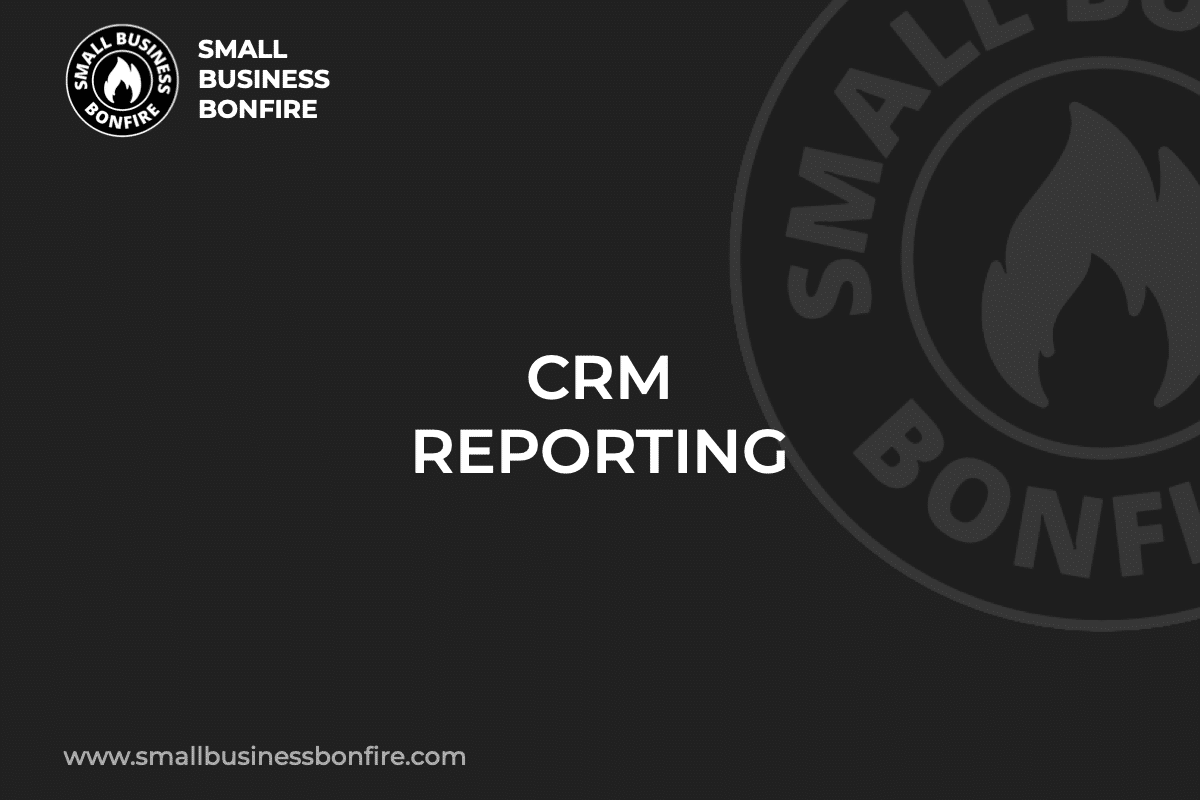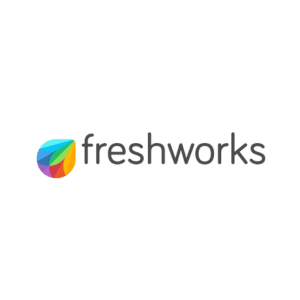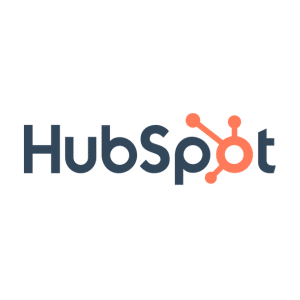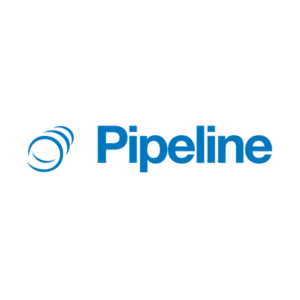CRM reports are the backbone of every good CRM.
Choosing the wrong CRM reports can lead to many problems, including inaccurate data, wasted time and resources, and missed opportunities to grow your business.
My name is AJ! Over the last five years, I’ve built and automated several businesses and relied heavily on CRM reports to streamline growth.
I started Small Business Bonfire (SBB) to assist other entrepreneurs in building their businesses into profitable entities.
In this guide, I will discuss the importance of CRM reporting for SMBs, how to choose the right CRM reporting tool for your business, and share some tips on using it effectively.
So let’s dive in and explore the world of CRM reporting!
Key Takeaways
- There are various types of CRM reports SMBs can utilize
- Sales teams can use sales reporting to monitor specific customers
- Sales and marketing teams can use data reporting to optimize their workflow
- Most customer relationship management software includes customer CRM reports
Related Reading: Best CRM for Small Businesses
SBB Featured Partners
What Is a CRM Report?
A CRM report is a summary of all the data that’s been collected by a company’s customer relationship management system.
It’s kind of like a snapshot of all the interactions that have taken place between a company and its customers.
These reports can include information about the following:
- Lead sources
- Sales revenue
- Purchase history
- Engagement levels
- Customer demographics
- Customer satisfaction scores
A good CRM report will give you a bird’s-eye view of your sales funnel, identify areas where your team can improve, and provide you with important customer behavior insights.
CRM analytics are crucial for reporting, as they analyze customer data to uncover patterns and trends.
Access to this information allows you to make data-driven decisions that help your business grow and thrive.
What Are the Benefits of CRM Reporting?
The benefits of CRM reporting are numerous and undeniable. While at the agency, I discovered the most significant advantages of having a CRM that let us analyze our customer data.
This helped us consolidate our brand-customer relationship, generated additional revenue streams, improved customer engagement, and streamlined our internal processes.
Here are the five main benefits of CRM reporting tools SBB found:
- CRM Reporting Helps You Understand Your Business
- CRM Data Helps with Strategic Decision Making
- SMB Managers Can Track Performance
- CRM Reports Help Investors Track SMB Investments
- CRM Reports Help Business Owners Understand Their Sales Pipeline
Let’s take a closer look at each of these benefits!
CRM Reporting Helps You Understand Your Business
With the help of proper CRM reporting, businesses can understand their customer’s data, buying behavior, and preferences in an efficient and organized manner.
These tools provide business owners with advanced insights that help them gain a competitive advantage by identifying areas for improvement.
These insights are critical in evaluating business performance, optimizing sales processes, and predicting future business trends.
Furthermore, CRM reporting helps identify opportunities businesses may have otherwise missed, such as cross-selling, upselling, and delivering personalized services to customers.
By compiling this information, SMBs can make more informed business decisions, such as what products to offer, how to market to their audience, and who their top customers are.
CRM Data Helps with Strategic Decision Making
Customer relationship management data can also give business owners a full 360-degree view of their customers, along with their buying behavior.
This means they can identify current patterns and trends to help them make more informed decisions about everything, from product development to marketing campaigns.
And the best part? Most CRM systems generate these reports automatically, so all SMBs need to do is take a look and start making those informed decisions!
Plus, it lets them see which customers are the most profitable for business, how long it takes to close a deal, and what channels are most effective for reaching their target audience.
Armed with this information, businesses can:
- Easily optimize their sales and marketing efforts
- Tailor their products and services to meet customer needs
- Improve customer loyalty and engagement
- Ultimately drive growth for their company
SMB Managers Can Track Performance
Another primary advantage of using CRM reporting is that it helps SMB managers easily track performance across various metrics, from sales to marketing campaigns and customer satisfaction.
For example, a sales team can break down their CRM reports by salesperson, day, or location, allowing managers to identify any underperforming personnel or locations and highlighting areas requiring additional training and marketing support.
Also, CRM platforms offer various reports and dashboards, which provide a comprehensive view of the sales pipeline, customer engagement, and campaign effectiveness.
With this data at their fingertips, SMB managers can make accurate decisions about where to allocate resources and which areas of the business to focus on and prioritize.
CRM Reports Help Investors Track SMB Investments
Additionally, CRM reporting is a game changer for SMB investors when it comes to tracking investments.
This is because these reports provide real time and detailed insights into the business operations for each individual investment.
These insights allow investors to stay on top of their investments by providing them with all the information they need to make better decisions.
Plus, CRM reporting can reveal business trends that might have otherwise gone unnoticed, allowing investors to pivot quickly and adjust to meet the changing needs and expectations of customers.
By monitoring the performance of their SMB investments, investors can decide whether to continue investing or scale back, thus providing a clearer path for the business’s growth and longevity.
CRM Reports Help Business Owners Understand Their Sales Pipeline
Finally, a CRM report can give businesses a clear and concise understanding of their sales pipeline.
With these reporting tools, business owners can easily see how their leads are progressing through the sales funnel, allowing them to decide where to allocate resources and focus their attention.
For example, if a particular product or service struggles to convert leads into paying customers, a business owner might adjust their marketing strategy or sales approach to address that issue.
Similarly, if one sales rep consistently outperforms the rest, a business owner can analyze their techniques and share those best practices with the rest of the sales team.
These insights can help SMBs fine-tune their sales process and increase their bottom line.
Types of CRM Reports
Now that we’ve discussed the benefits of CRM reporting, let’s look at some of the essential CRM reports available.
Each of these reports provides unique insights that can be used to improve sales and customer service processes, implement new strategies, and ultimately drive growth for SMBs.
Customer Service Reports
One crucial type of CRM report is a customer service report.
These reports typically include the following key metrics:
- The average time your customer service team takes to resolve an issue
- Number of support tickets received and closed
- Customer satisfaction ratings
By tracking these CRM metrics over time, you can identify areas of improvement in your customer service operations and ensure your customers receive the support they need to stay loyal to your brand.
Plus, responding quickly and effectively to customer issues can help increase your brand’s reputation and attract new customers.
Sales Performance Report
A sales performance report is also especially important because it provides insight into how effectively sales teams perform.
This report typically includes:
- Total sales revenue
- Number of deals closed
- Average deal size
- Lead conversion rates
With this information, you can identify areas where your team excels and where they may need additional support or training.
Moreover, by tracking these key performance indicators over time, you can see how your sales reps’ performance is evolving and adjust as needed to stay on track toward your sales goals.
CRM Pipeline Analysis Report
Another vital CRM report is a CRM pipeline analysis report.
This type of report provides a visual representation of the sales pipeline, allowing you to track the progress of deals through the sales funnel from lead to close.
It can assist in revealing potential bottlenecks in the sales process and help your sales representatives prioritize their follow-up actions accordingly.
Additionally, the report can identify trends in the sales cycle and highlight areas where additional training or resources may be needed.
Revenue Forecast Reports
A revenue forecast report is another important type of CRM report.
These reports provide insight into how your business is performing and can help predict future revenue and decide where to allocate resources without overextending.
You can make informed decisions about growth and budgeting by looking at past sales data and leading key performance indicators, such as pipeline size and conversion rates.
You can better plan for hiring, marketing, and other key investments with accurate sales forecasting.
Sales Activity Report
Sales activity reports can show you how many leads have been converted into sales, how long it takes for a deal to move from stage to stage in the pipeline, and how much revenue is generated during a certain period.
You can also get a better understanding of factors that impact sales performance, such as product lines, geographical locations, or customer segments.
By analyzing these key metrics, you can adjust your sales strategy and identify areas for improvement.
Furthermore, sales activity reports can help you understand the impact of different marketing campaigns and the performance of specific sales reps.
Lead Source Analysis Report
A lead source analysis report provides information about where your leads are coming from, allowing your business to fine-tune its marketing and outreach efforts.
With this report, you can gather data on which channels generate the most leads, whether it’s social media, email marketing, or phone calls.
By understanding this information, you can focus more of your resources on the most effective channels and optimize your marketing and sales strategies to grow your customer base.
Plus, ongoing tracking and analysis of lead sources can help you identify trends that emerge throughout your industry.
Marketing Campaign Analysis Report
Lastly, a marketing campaign analysis report can help you measure the success of your campaigns and determine which strategies are delivering the best returns.
This type of report is essential for understanding which channels are most successful, allowing you to refine your strategy and improve your return on investment.
By analyzing the results of your campaigns, you can save time and money while still optimizing your marketing efforts for maximum impact.
With this report, you can quickly identify which campaigns bring in leads, customers, and revenue to grow your business successfully.
How Do You Write a CRM Report?
Writing CRM reports require a clear understanding of what data to include, how to present it, and why it matters.
At the agency, I developed a CRM report template that our sales and marketing teams used to organize data into an easy-to-read format.
Below are five steps to follow to write an effective CRM report!
Step 1: Log in to Your CRM of Choice
The first step is to log in to your preferred CRM software.
Once you’re in, take some time to navigate around and familiarize yourself with the platform.
Make sure you can locate the specific data points you’re looking for, such as customer interactions or sales figures.
It’s important to ensure your data is accurate and relevant to your report’s purpose.
Remember, the key to a successful CRM report is to present the information clearly and concisely so that everyone who reads it understands the most important takeaways.
Step 2: Click the “Reports Tab”
After logging in to your CRM, the next step is a breeze! Once you’re on the homepage, simply click on the “reports” tab. This will take you to a host of different report options.
From there, you can get a great overview of all available reports.
Depending on the CRM software you choose, you can select from pre-built templates, customize your own reports, or even import reports from other users.
The “reports tab” is essentially the hub for all the analytical data you need to keep your business running smoothly.
It’s a powerful tool that gives you insight into your customers, sales, and productivity.
Step 3: Select the Report Type
Next up is to select the type of report you require. This step is crucial because it determines the format and structure of your report and ultimately shapes how your insights are presented.
When choosing a report type, think about the purpose of your report and what you want to convey to your audience.
Do you want to show performance over time, highlight trends or patterns, or identify areas for improvement?
Some common report types include dashboards, charts or graphs, tables, and summaries.
Each type has its own strengths and weaknesses, so consider which one will best align with your specific needs and objectives.
Step 4: Select Data Sources
Once you’ve chosen the report, you’ll need to select the data sources and any filters you’d like to apply.
This means figuring out which databases, spreadsheets, or other sources to pull your information from.
Keep in mind that the type of report you’re creating will determine what data you need to look at, so think carefully about what you’re trying to accomplish.
Once you’ve identified your sources, it’s time to pull the data together. Your data may come from various sources, including customer surveys, social media, web analytics, and transactional data.
Be sure to establish clear criteria for selecting data sources and document your process and findings.
This will help ensure your report is accurate, actionable, and meaningful to your stakeholders.
Step 5: Customize Your Report
Now comes the fun part—customizing your dashboard or reports to display the information in a meaningful way.
This step involves tailoring your findings and insights to your specific audience.
Consider who will read your report and what they need to know.
- Are they sales reps who need to see their performance metrics?
- Or are they marketing managers who want to track lead generation?
You can customize your report by adding graphs or charts highlighting key data points or by including commentary and recommendations based on your analysis.
The key is ensuring your report is informative and actionable, which your team can use to make data-driven decisions.
How Small Businesses Use CRM Reports
Small businesses use CRM reports to gain valuable insights into customer relations and improve their marketing strategies.
To reiterate, one of the primary functions of CRM reports is to provide businesses with information on sales trends, allowing them to predict future sales patterns and optimize inventory levels.
They also use CRM reports to track customer behavior and preferences, which helps them tailor their campaigns and product offerings to specific audiences.
Another benefit is that they can help businesses identify and address areas for improvement in their customer service, which can lead to greater customer engagement and loyalty.
By harnessing the power of CRM reports, small businesses can take a data-driven approach to build long-lasting customer relationships and succeed in a highly competitive market.
Best CRMs With Reporting
When it comes to CRM software with top-notch reporting capabilities, the competition is fierce!
However, I have advanced experience using multiple different CRM platforms while overseeing business processes at the digital agency.
Let’s review some of my top choices for the best CRM software!
Monday.com
If you’re looking for a user-friendly and visually appealing CRM reporting tool, then Monday.com might be your perfect match.
This platform enables you to track and visualize your sales pipeline, measure your team’s progress, and easily understand customer behavior.
What’s really cool about Monday.com is that it’s highly customizable, so you can set up your CRM in a way that best suits your business workflow.
Another bonus is that Monday.com integrates with other popular business tools such as Slack, Trello, and Google Drive, making it easier for you to manage your daily tasks.
Plus, the company offers competitive pricing and even has an active community where users can share tips and insights.
To learn more about this CRM system, consider reading our comprehensive Monday.com review!
HubSpot CRM
HubSpot CRM is an incredible tool for SMBs that want to streamline their sales process.
With its user-friendly interface and range of features, the platform is a great choice for any business looking to manage customer relationships more effectively.
This CRM system is known for its ease of use, making it a popular choice for businesses that don’t have a lot of experience with CRMs.
Additionally, HubSpot CRM integrates seamlessly with other HubSpot tools, making it an all-in-one solution for businesses that need a complete marketing and sales automation platform.
Moreover, its robust reporting features and intuitive dashboard makes it easy for businesses to track their progress and measure success.
If you think this software solution might be best for your business, check out our detailed HubSpot CRM review before making your final decision!
Zoho CRM
Zoho CRM is a cloud-based platform perfect for small and medium-sized businesses that want to manage customer relationships effectively.
With this platform, you get many features that help you track sales activities, manage leads, and keep your customer data in one place.
You can also automate workflows, track deals, and generate reports that give you a real-time view of your sales process.
One of the best things about Zoho CRM is that it’s really easy to use and can be customized to suit your business needs.
Plus, their pricing is quite affordable, making it an attractive option for SMBs looking for a budget-friendly CRM solution.
Overall, Zoho CRM is a great choice for SMBs who want a powerful yet simple CRM system that can help them drive growth and revenue.
If you are interested in learning more about Zoho, check out our full Zoho CRM Review!
CRM Report Example
Alright, let’s dive into a real-life CRM report example!
A few months ago, a small business owner I worked with struggled to increase sales. We decided to create a sales performance report that analyzed the customer journey, from initial contact to purchase, and identified areas for improvement.
We found that the majority of customers were dropping off during the checkout process, so we made some changes to streamline the process, like offering more payment options and optimizing the mobile experience.
Within a few weeks, the owner’s business saw a significant increase in sales and customer retention.
By analyzing this report, we easily identified bottlenecks in their pipeline, saw which salespeople were performing best (and worst), and were able to pinpoint where leads were getting stuck or dropping off.
This invaluable information helped us take corrective actions and optimize the sales process for maximum efficiency.
The Bottom Line
Implementing a CRM reporting system can greatly benefit SMBs looking to stay ahead of the game in today’s competitive business landscape.
With the help of an advanced reporting tool, businesses can gather accurate customer data, analyze it, and make informed decisions that benefit their organization’s growth.
By taking the time to understand your reporting requirements and investing in the right CRM system, you can take your business to the next level and compete with larger companies in your industry.
Are you looking for a CRM software solution to help you maximize your CRM reports? Do you have any questions about how to write an effective CRM report?
Let’s keep the conversation going in the comments section below!
CRM Reporting FAQs
CRM reporting refers to the process of generating reports and analyzing data from a Customer Relationship Management (CRM) system. It allows businesses to gain insights into customer behavior, preferences, and patterns, which can improve decision-making and identify areas for growth and improvement.
SMBs often have limited resources and customer bases, making it crucial to make the most of every customer relationship. CRM reporting provides valuable data and analytics that can help SMBs understand their customers better, target them more effectively, and make more informed business decisions.
SMBs can gain information from CRM reports, including customer demographics, purchase history, engagement rates, and revenue generated by specific interactions. They can also analyze sales team performance, website traffic, and customer service interactions to identify areas for improvement and optimize their operations.
To make the most of their CRM reporting efforts, SMBs should first define their goals and determine the metrics most important to their business. They should also ensure that their CRM system is set up to capture relevant data and use reporting tools that enable them to build custom reports that meet their specific needs. Regular analysis of CRM reports and collaboration between teams can help SMBs identify opportunities for growth and make informed decisions that drive success.
Many CRM software solutions are available, ranging from free to paid options. SMBs can choose from cloud-based platforms like Salesforce or HubSpot or opt for smaller, more affordable solutions like Zoho or Monday.com. The key is to find a solution that meets your business needs and budget and to invest the time and effort needed to set up and use your CRM effectively.
Newsletter Signup
Join The Leads Field Guide Newsletter for tips, strategies and (free) resources for growing your leads, and closing more deals.




